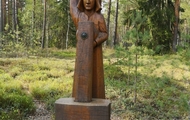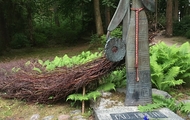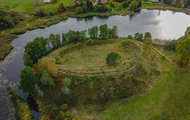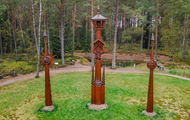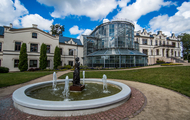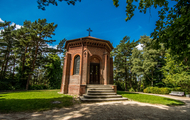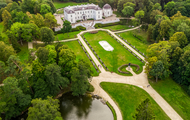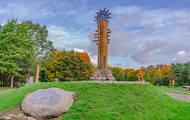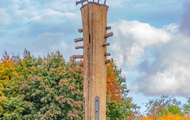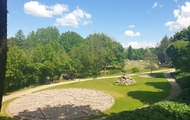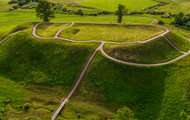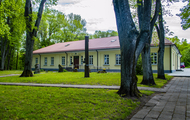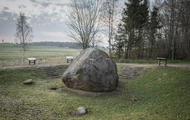The Baltic Trail: A Journey into the World of the Curonians – three circular routes that trace the ancient lands of the Curonians. Each route not only highlights sites connected to Baltic culture but also offers a range of educational programmes, entertainment, and other engaging activities.
PILSOTAS LANDS 110 KILOMETRES
1. Kalniškė (Gargždai) Hillfort
- Kalniškė, the Klaipėda district (55.73027, 21.16605)
- www.klaipedosrajonas.lt
The Kalniškė (Gargždai) Hillfort, located across the Minija Valley from Gargždai in the historic land of Ceklis, marks the town's origins. It commemorates the first mention of the Curonian castle, Garisda, in 1253 – a key moment in Gargždai history. The castle's strength is evident in its impressive fortifications – a cascade of ramparts, deep ditches, and steep slopes that once provided formidable defence. The beautifully restored Kalniškė Hillfort is now a must-visit destination, offering breathtaking panoramic views of the town of Gargždai.
2. Klaipėda District Tourism Information Centre
- Kvietinių g. 5-2, Gargždai, the Klaipėda district
- www.klaipedosrajonas.lt
- +370 620 81901
- info@klaipedosrajonas.lt
The Klaipėda District Tourism Information Centre offers an engaging, interactive experience, showcasing the history of the Curonians along with authentic Curonian jewellery and weapons. Visitors can step into Curonian outfits using smart technology and even download a photo of themselves in the outfit directly to their phone. You’re also invited to experience an animated 3D film that takes you through the history of Gargždai, from its marshy beginnings to the present day. Plus, you can put on a virtual reality headset and be transported to a modern-day Curonian village on the Kalniškė (Gargždai) Hillfort.
3. Eketė Hillfort
- Sendvaris Eldership, the Klaipėda district (55.79864, 21.17844)
- www.klaipedosrajonas.lt
The Eketė Hillfort, situated in the Pilsotas Lands, was one of the largest and most formidable Curonian hillforts. From the 9th to the 13th centuries, the hillfort served as a key political, military, and economic hub. During that period, the hillfort was fortified with five earthworks and four ditches, while a sizable settlement extended beneath the fortifications. In 1972, archaeological excavations at the hillfort and surrounding settlements uncovered a variety of ancient weapons, toys, and everyday tools dating back to the 1st–13th centuries. Today, the hillfort is home to the annual Midsummer Festival – St John's Day.
4. The Secrets of Amber Hunting
- Plocio g. 54, Karklė, the Klaipėda district
- www.gintalinis.lt
- +370 650 21337
- igoris@amberguide.lt
For those seeking one-of-a-kind experiences, don’t miss the chance to go looking for amber in the Baltic Sea. To make sure your hunt is successful, we recommend booking the unique and educational tour, the Secrets of Amber Hunting. A professional amber hunter will guide you through the process, sharing all the essential knowledge amber hunters need to know.
5. Therapies in Karklė
- Plocio g. 10, Karklė, Klaipėda District
- www.karkelbeck.lt/
- +370 46 446 990
- info@karkelbeck.lt
Everyone visiting Karklė is invited to experience unique therapeutic sessions and a variety of engaging educational programmes. The Karkelbeck No. 409 homestead offers a wide variety of activities. You can choose from a range of therapies, including amber and sound therapy with standing bells, fractal drawing, dance movement and sound therapy, massages, and more. To ensure a relaxing and cosy experience, advance booking is required.
6. The Dutchman's Cap
- Karklė, the Klaipėda district (55.79830, 21.06726)
- www.klaipedosrajonas.lt
It was a retreating glacier that formed a unique moraine ridge on the coast of Lithuania, now known as the ‘Dutchman’s Cap’. This cliff, a parabolic dune rising 24.4 metres above the sea level, is constantly being shaped by wave erosion, gradually descending to the coast at a slope of 16–18 meters. The cliff is thought to have earned its name due to its resemblance to a Dutch cap when seen from the sea. The cliff offers a stunning view of the sea, featuring steep shores and rugged, rocky beaches.
7. Klaipėda Castle Site
- Priešpilio g. 2, Klaipėda
- www.mlimuziejus.lt
- +370 601 17617
The Klaipėda Castle Site is one of the city's oldest landmarks, marking the birthplace of its history. Klaipėda’s roots can be traced back to the settlement that once thrived near the castle. Klaipėda Castle, originally called Memelburg, was first mentioned in a document dated 29 July 1252. It marked the agreement between Eberhard von Zeine, the Grand Master of the Livonian Order, and Curonian Bishop Heinrich to build a castle between the Nemunas and Dangė rivers. A wooden castle was built in the very same year. Today, the castle site is home to the Castle Museum, a conference centre, and the World War II Exhibition Museum 39/45. The archaeological curtain wall of the Castle Museum features an exhibition dedicated to the history of the Balts.
8. The Let's Learn about Balts Ornaments at the Blacksmithing Museum educational programme
- Šaltkalvių g. 2, 2 a, Klaipėda
- www.mlimuziejus.lt
- +370 46 41 05 26
The Blacksmith’s Museum was created to preserve the historical and cultural heritage of the Klaipėda region. The museum hosts the educational programme Let's Learn about Balts Ornaments where participants explore ancient jewellery-making techniques, the diversity of Baltic jewellery, and the symbolism behind these intricate ornaments. In the workshop, you can craft a bronze Curonian ornament.
9. Viking-Era Food Tasting Experience
- Mokyklos g. 1, Dreverna, the Klaipėda district
- www.klaipedosrajonas.lt
- +370 686 41552
During the educational programme, participants are introduced to a variety of dishes from the 9th to the 12th centuries, learning about the unique cooking methods, as well as the vegetables and spices commonly used at the time. Participants shape their own oat or barley bread cakes, bake them over an open fire furnace, and enjoy them with delicious hemp butter. Those with a sweet tooth can make buns filled with poppy seeds, honey, or cranberries, then bake them over a campfire. The freshly baked buns are best enjoyed with acorn coffee, herbal tea, or milk. The programme showcases archaeological costumes and fascinating finds from the Žviliai, Tytuvėnai, and Laiviai burial sites.
10. Sailing Aboard an Ancient Curonian Ship
- Žvejų g. 13, Dreverna, Klaipėda District
- www.klaipedosrajonas.lt
- +370 648 23198
You can enjoy stunning views of the Curonian Lagoon by sailing aboard the ancient Curonian ship Dreverna. The ship is available for private leisurely cruises on the Curonian Lagoon, accommodating groups of up to 30 people, or as part of the Fish Trail educational programme. The Dreverna ship was constructed based on the 19th–20th-century design of a Curonian Lagoon cargo ship created by the shipbuilder Jonas Gižas. A replica thereof is displayed at the Jonas Gižas ethnographic homestead in Dreverna.
MĖGUVA LANDS 100 KILOMETRES
1. Palanga Amber Museum
- Vytauto g. 17, Palanga
- www.lndm.lt
- +370 460 51 319
- gintaro.muziejus@lndm.lt
The Palanga Amber Museum is housed in the palace of Count Feliksas Tiškevičius. It features around 5,000 items on display. The museum explores the history of amber and its significance in the lives of the Balts and Curonians. The exhibition displays over 70 unique pieces of amber, valued not only for their remarkable size (including the largest, the Sun Stone, weighing 3.52 kilograms), but also for their shapes, colour variations, and other unique features. The museum offers a range of educational programmes, including one called Symbols and Images of Baltic Signs.
2. Birutė Hill
- Vytauto g. 21, Palanga
- www.palangostic.lt
A visit to one of Palanga’s most beautiful spots, Birutė Park, wouldn’t be complete without a climb up Birutė Hill. Here, on the former grounds of the Tiškevičiai estate, the ancient Birutė pine forest – once considered sacred – has remained untouched for centuries. The legendary Birutė Hill, standing 21 meters above sea level, provides a stunning view of the sea. Pottery from the 1st millennium has been uncovered on the hill, along with traces of a castle and a sacrificial site dating back to the 10th–13th centuries, and the foot of the hill was home to a village.
It later became a sacred pagan site, complete with a paleo-astronomy observatory. This sacred site is linked to the name of priestess Birutė, the wife of Duke Kęstutis and the mother of Vytautas. It is said that she lived here, tended to the sacred fire, and was buried on the hill after her death.
3. Samogitian Sanctuary in Šventoji
- Šventoji (56.04108, 21.07484)
- www.palangostic.lt
- +370 460 48811
The Samogitian Sanctuary is a pagan shrine with a paleo-astronomy observatory, restored in 1998, which once stood on Birutė Hill in Palanga in the 15th century. Here, you can admire wooden pillars intricately carved by artists to represent the mythological gods of the Balts: Perkūnas, Aušrinė, Žemyna, Austėja, Ondenis, Patrimpas, Patulas, Velnias, Ledas, Saulė, and Mėnulis. As the sun sets into the sea, you can gaze up at the pillars and calculate the calendar holidays: Dew Holiday, Stork Day, Shrove Tuesday, Christmas, etc.
4. Baltic Mythological Park
- Sausdravai, Kretinga District (56.03026, 21.18862)
- www.baltuparkas.webs.com
- +370 625 10846
- baltulieptas@gmail.com
The Baltic Mythological Park offers a unique insight into the ancient Baltic view of the world and the universe through visual (wooden sculptures) and auditory (stories and songs) experiences. It showcases Baltic mythology while promoting the traditional values of Baltic culture. As you listen to the guide’s stories, you'll discover the fascinating Baltic gods and goddesses and learn about their extraordinary powers. The park is home to the unique Vadimas's Labyrinth, a one-of-a-kind attraction. No matter which path you take, they all lead to the heart of the labyrinth – the Well of Destiny.
5. Senoji Įpiltis Archaeological Monuments Complex
- Senoji Įpiltis, Kretinga District (56.12346, 21.24291)
- www.aplankykkretinga.lt
The Senoji Įpiltis Archaeological Monuments Complex, located in the Duvzarė area, includes three hillforts, a burial ground, and a ceremonial stone. The archaeological complex dates back to the 1st millennium BC to the 13th century. Near the pond, you'll find the impressive Pilalė Hillfort, also known as Mary's Hill, and further along the Šventoji River, there is the Warrior Hillfort. The Soldiers' Cemetery sits on the slope of the Šventoji River near Castle Hill, while the Aukuro (Sacrificial) Stone, famous for its healing spring, is located near Pilalė (Mary's Hill) at Graistupis.
6. Bee and Forest Therapy at Kalnius Homestead
- Barkeliai, Kretinga District (56.005557, 21.30542)
- https://kalniaus-sodyba.lt/
- +370 608 64000
- info@kalniaus-sodyba.lt
Privacy, nature, tranquillity, horses, and therapies – these are the elements that make Kalnius homestead truly unique. Visitors to the homestead can take full advantage of the unique forest and bee therapies on offer. The bee therapy is designed to help de-stress, calm your mind, and balance your thoughts and emotions as you relax in a special house surrounded by thousands of buzzing bees. It not only soothes but also helps restore damaged biofields, strengthens immunity, balances the nervous system, and has a positive effect on overall health.
7. The Kretinga Manor Park Sundial
- Žemaitės al. 4, Kretinga
- www.aplankykkretinga.lt
The park surrounding Kretinga Manor offers its visitors to go for a leisurely stroll among centuries-old oak trees, wander through linden and chestnut avenues, and explore the peaceful banks of the ponds. The Manor's park spans an impressive 23 hectares. In 2002, an astronomy calendar with a sundial was added to decorate the park. It features thirteen thoughtfully arranged sculptures, symbolising the traditions of ancient Baltic culture and Lithuanian festivals.
8. Kretinga Museum
- Vilniaus g. 43, Kretinga
- https://aplankykkretinga.lt/
- +370 445 77 612
- info@kretingosmuziejus.lt
The Kretinga Museum showcases one of the largest archaeological exhibitions dedicated to the Curonians. Visitors can explore archaeological findings from the Anduliai and Lazdinininkai burial sites, as well as the Imbarė Hillfort and settlement. Amber and its significance in the life of the Curonians hold a special place in the exhibition. Various quern stones are displayed in the open air for visitors to admire.
CEKLIS LANDS 160 KILOMETRES
1. Skuodas Museum
- Šaulių g. 3, Skuodas
- www.skuodomuziejus.lt
- +370 867 5136
- skuodomuziejus@gmail.com
The museum's historical exhibition features an information terminal titled Apuolė: the Centre of Curonian Lands. Through interactive exhibits, visitors can explore Lithuania's oldest settlement, the Apuolė Hillfort, and learn about Curonian life, Viking weaponry, clothing, ships, and combat techniques.
2. Apuolė Hillfort
- Apuolė, Skuodas District (56.24647, 21.67808)
- www.infoskuodas.lt
The Apuolė Hillfort is the earliest settlement in Lithuania mentioned in written sources and was once home to one of the most renowned and largest Curonian castles. In the 9th century, Apuolė was a key political, military, and economic centre in the Ceklis Lands. Lithuanian and Swedish archaeologists excavating the Apuolė Hillfort uncovered not only valuable historical artefacts but also a unique oak well. The Rimbert Chronicle recounts the fierce Curonian battles against the Vikings at the Apuolė Hillfort in 853–854. After successfully repelling a Danish attack, the castle's defenders were eventually forced to surrender to King Olof of Sweden, handing over a large number of weapons, gold, and silver.
Nowadays, the Apuolė Hillfort hosts the annual Baltic Sea Region Ancient Tribal Warfare and Crafts Festival, celebrating the region's rich history and traditions. The festival features reenacted Curonian–Viking battles and displays of medieval crafts.
3. Barstyčiai (Puokė) Stone
- Puokė, Skuodas District (56.19191, 21.89638)
- www.infoskuodas.lt
The Barstyčiai (Puokė) Stone is the largest boulder in Lithuania and is featured in the Book of Records. The giant stone measures 13 metres long, 9 metres wide, and 4 metres high, and weighs an impressive 680 tonnes. It is believed that glaciers brought the massive stone from Sweden. According to legend, in ancient times, the site where the Puokė Stone now rests was home to a sacred Lithuanian pagan shrine. Enraged by an unfaithful priestess, the god of thunder Perkūnas buried the shrine in the ground, along with the massive stone.
4. Energy Labyrinths and Geometric Figures Park
- Likšiai, Plungė District (56.05535, 21.91980)
- www.energlabirintai.lt/
- +370 675 45111
- energlabirintai@gmail.com
The park features five labyrinths, three domes, a merkaba, and a mandala on the ground, offering a unique and spiritual experience. Labyrinths, dating back over 4,000 years, can be found in nearly every major religious tradition across the globe. Much like the pyramids, the labyrinths are crafted from geometric shapes that form a sacred space. Energy labyrinths have a single path that leads to the centre and then back again. As a person changes direction while walking through the labyrinth, their perception shifts from the right hemisphere of the brain to the left, creating a unique mental and emotional experience. This shift in perception is one of the reasons why the labyrinth can stimulate heightened receptivity in terms of sensory awareness, perception, and mindfulness.
5. Siberija Observation Tower
- Plateliai, Plungė District (56.03055, 21.81458)
- www.visitplunge.lt
Samogitia National Park is home to a 15-metre-tall observation tower atop Cidabras Hill, offering stunning views of the Siberija Marsh and the Kunigas River. The Siberian Marsh is one of the most valuable wetlands in Samogitia National Park and has been declared a telmological reserve. From the top of the observation tower, visitors can enjoy breathtaking views of Plateliai and Beržoras.
6. Imbarė Hillfort
- Imbarė, Kretinga District (56.02946, 21.55491)
- www.aplankykkretinga.lt
The Imbarė Hillfort is one of the most striking hillforts in the Kretinga district. A Curonian castle, which stood atop the Imbarė Hillfort in the 10th–13th centuries, was a key administrative and economic centre for the Curonians of Ceklis. Archaeological excavations at the site uncovered flint and metal tools, weapons, jewellery, ceramics, and charred grains. Thanks to the initiative of the Salantai Regional Park Administration, the hillfort has been landscaped and is now open to tourists.
7. Educational Picnic in Search of a Curonian Castle
- Kartena Hillfort, Kretinga Region (55.910284, 21.475469)
- www.salanturp.lt
- +370 614 48404
- irma.zasytiene@salanturp.lt
The impressive Kartena Hillfort, dating back to the 8th–13th centuries, was home to a wooden castle that served as a crucial defensive and administrative centre for the Curonian land of Ceklis. The educational programme offers an in-depth look into the unique historical and archaeological complex of Kartena Hillfort, exploring the ancient Curonian settlement, as well as the region's history and mythology. Active hiking in the Minija Valley provides the opportunity to immerse yourself in nature, visit the mythological stone known as the Stone of Laumė, and explore the Kartena or Abakai Lourdes, complete with its charming chapel.
8. Boulder of Šilalė
- Mosėdis, Skuodas District (56.15442, 21.56219)
- www.infoskuodas.lt
The Boulder of Šilalė is the fifth largest stone in Lithuania. The stone rests on a hill that was once encircled by marshes. Nearby, you'll find the bowl and altar stones. It's the legacy of an ancient pagan temple. A hearth was discovered near the bowl stone, encircled by a crown of stones. Examination of the stones revealed that the altar, a stone with a bowl, was positioned on a pedestal at the northern edge of the hearth. The stone was later restored to its original location, recreating the complete appearance of the ancient pagan shrine. The hearth pit contained traces of soot, resin, and amber fused with ash. The remains suggest that the hearth served as a fireplace during pagan times. This stone is regarded as one of the last altars of the ancient Lithuanian religion. Aukuro Stone – an archaeological monument. Archaeologists have discovered that it was the site of pagan rituals. The site was accessed by a cobbled path through the marsh from the west. The stone was once surrounded by a sacred grove.
9. Vaclovas Intas Stone Museum
- Salantų g. 2, Mosėdis
- www.akmenumuziejus.lt
- +370 440 76291
- administratore@akmenumuziejus.lt
The Vaclovas Intas Stone Museum is the only museum of its kind in Europe. It features indoor and outdoor exhibitions. The indoor exhibition is located in a watermill, showcasing various rocks, animal and plant fossils, a collection of colourful and textured sands, and more. The outdoor exhibition features over 150,000 boulders of different shapes, origins, textures, and colours, including ancient Curonian mythological stones. The museum hosts various educational activities.
10. Curonian Tribe History Museum in Mosėdis
- Akmenų g. 17, Mosėdis
- +370 646 43830
Mosėdis is home to Lithuania’s only museum dedicated to the rich history of the Curonian tribe. The museum showcases reconstructions of archaeological finds, including Curonian weapons, jewellery, and household tools. Visitors can immerse themselves in fascinating stories brought to life through interactive and sensory experiences. With precise reconstructions, you can see how artefacts looked when they were new before being buried over time. Visitors can even try out tools and weapons from the Curonian era for a hands-on experience. The museum also offers hands-on craft experiences, including weaving on a warp-weighted loom and cooking over an open fire, just as the Curonians once did.


.jpg)
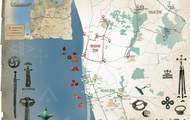
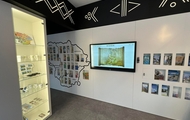
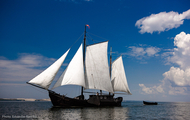
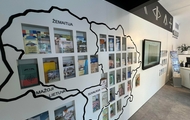
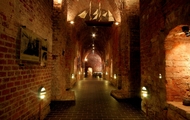
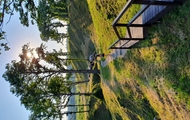
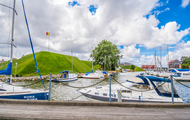
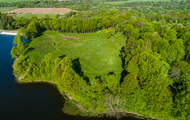
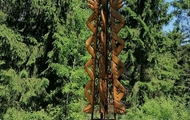

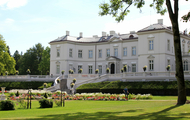
.jpg)
